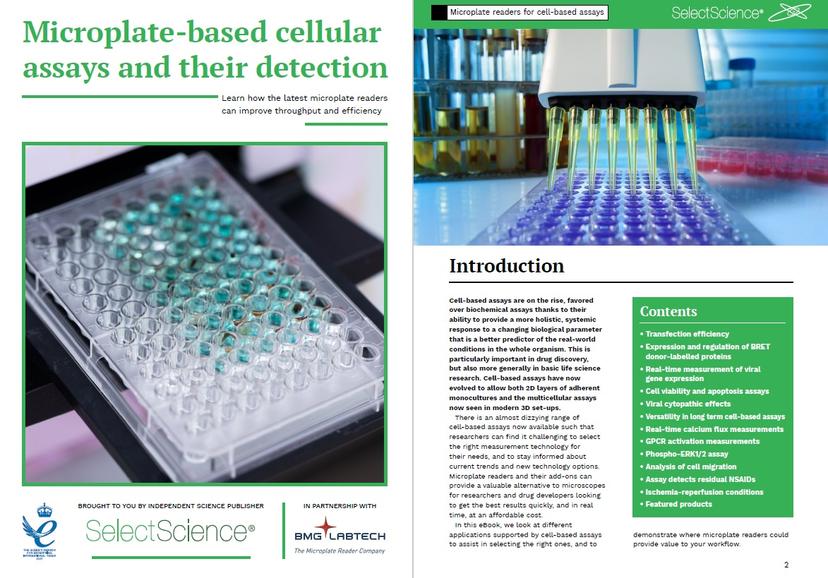Microplate readers for cell based assays: An editorial guide
With a huge number of cell based assays available to life science researchers, it can be difficult to select the right one – read this article, then download the eBook, to learn how the latest microplate readers can improve throughput and efficiency of cell-based assays.
18 Oct 2022

With so many microplate readers for cell-based assays now available on the market, researchers can find it challenging to select the right measurement technology for their needs, and to stay informed about current trends and new technology options. Microplate readers and their add-ons can provide a valuable alternative to microscopes for researchers and drug developers looking to get the best results from their cell-based assays, quickly, and in real-time, at an affordable cost.
In this free eBook, we explore the topic of cell based assays for microplate readers, and discover methods that could help you to select the right assays for your workflow.
How can microplate readers for cell-based assays help to analyze gene expression?
There are a range of different applications in cell culture that may require the analysis of gene expression through cell-based assays.
Fluorescence-based assays of gene expression often require the real-time measurement that can be provided by microplate readers, with some able to selectively detect different fluorophores in a multiplex approach.
When paired with atmospheric control units, these microplate readers can also be used to analyze gene expression of fluorophore-labeled viruses in real-time.
How can microplate readers for cell-based assays help to measure cell migration and cell signaling?
Cell migration can be an important indicator of underlying processes in an array of different areas of research such as cancer progression and cell recruitment. A method to assess cell migration involves the disruption of a confluent monolayer – e.g. by a scratch – and then migration of cells into the scratched area is measured. Microplate readers can help to measure cell migration in real-time.
Microplate readers can measure cell signaling by harnessing a number of cell-based assays that require the monitoring of receptor-mediated activation of cellular signaling, particularly those that study secondary messengers such as cAMP or intracellular calcium.
This can include real-time measurements, and multi-detection microplate readers can measure cell signaling when utilized alongside other assays.
How can microplate readers for cell-based assays help to measure cell metabolism and reactive oxygen species?
Reactive oxygen species (ROS) are unstable molecules that can cause DNA and RNA damage within cells, and can even lead to cell death. Measuring ROS in cell-based assays can be difficult. One example of multiplate readers helping to measure ROS is through detecting residual anti-inflammatory drugs in wastewater.
